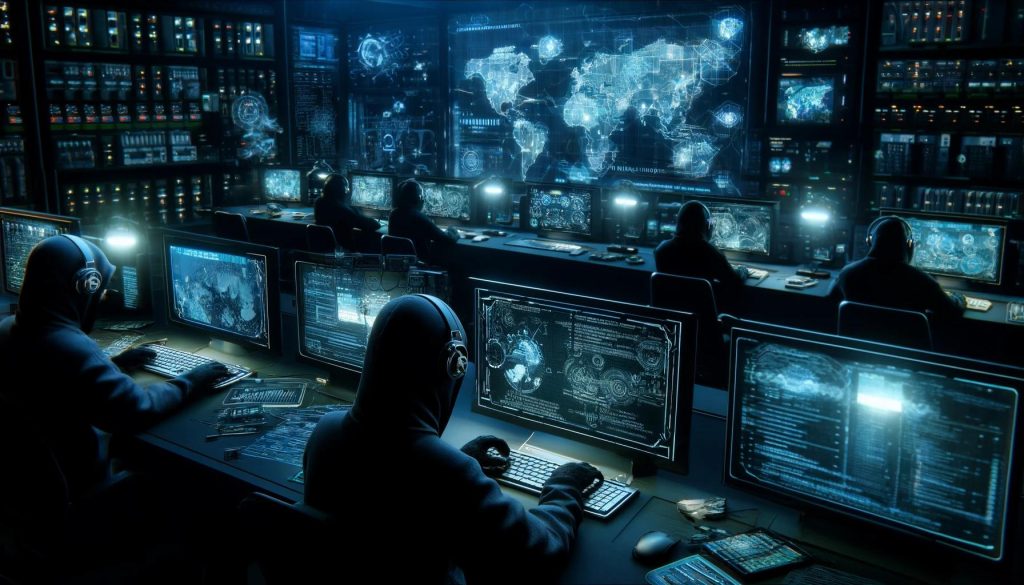
A term that is becoming more common in this digital age is “cyberwarfare.” It refers to a wide range of actions taken in cyberspace to damage, disturb, or gain illegal access to computer systems, networks, or information. With the rapid advancement of technology, cyber tactics have become an essential part of contemporary battles. From its historical origins to the upcoming trends influencing this quickly developing field of warfare, this article explores the many facets of cyberwarfare.
So, what exactly is cyberwarfare?
Cyberwarfare is essentially the use of digital attacks such as hacking, software, and other malicious activities to impede or disrupt the operations of a government or group. Government networks, banks, vital infrastructure, and even military assets are all fair game for these kinds of assaults.
An asymmetrical nature is a defining feature of cyberwarfare. This means that a smaller, less powerful organization may potentially do enormous harm to a bigger, more powerful foe. The inherent weaknesses in today’s networked systems are the root cause of this inequality, since they allow individuals with the necessary technological skills to exploit them.
The Background of Cyberwarfare
There had been rumblings of cyber assaults for some time before they became mainstream news. There are several instances of governments and hackers experimenting with cyber warfare throughout history, such as the Morris Worm in 1988 that caused mayhem on the embryonic internet and Stuxnet in 2010 that sabotaged Iran’s nuclear program.
There were watershed moments in cyberwarfare history when technology advanced at a dizzying rate. Every major cyberattack, beginning with the first coordinated assault on Estonia in 2007 and continuing with the latest NotPetya ransomware that has caused widespread damage, has changed the face of cyberwarfare and awakened governments and organizations throughout the globe.
Different Approaches to Cyber Warfare
- Espionage
Using tools like botnets and spear-phishing assaults, it involves spying on another country to steal information.
- Sabotage
Using internal threats and compromising or erasing critical data are part of it.
- Denial-of-Service (DoS) attacks
The goal of this attack is to block real visitors from visiting a website by flooding it with fake requests.
- Electrical Power Grid Attacks
The assault aims to damage infrastructure and destroy key systems by targeting the electrical grid.
- Propaganda Attacks
The goal here is to influence how others see things by leaking humiliating facts or distributing false information.
- Economic Disruption
The goal is to steal from or otherwise disrupt financial institutions such as banks and stock exchanges.
- Shocking Assaults
The goal of launching large-scale, unannounced strikes is to weaken defenses and prepare for future physical attacks.
Economic Consequences of Cyber Attacks
Companies and governments alike are vulnerable to cyberattacks, which may result in substantial financial losses. The loss of confidence and credibility in the market, on top of the billions of dollars needed to recover from a cyberattack, may be devastating. Just imagine your favorite online shop becoming the target of a cyberattack. You put yourself in danger of fraud or identity theft, and it hurts them too. The monetary toll of cyber assaults is substantial.
Implications for society and politics
Theft of data and disruption of services are at the heart of cyberwarfare, but the phenomenon may also have far-reaching effects on social and political systems. Imagine the consequences of a cyberattack on an election system that causes people to question the veracity of the results. Another scenario is a concerted cyberattack that causes misinformation to spread rapidly over social media. Influencing public opinion and political results, cyberwarfare has far-reaching social and political ramifications.
There are no limits to the danger
Cyberwarfare strategies and tools are constantly developing in response to new technological developments. Recent innovations in this field include state-sponsored cyber operations, highly effective cyberweapons, and the offensive application of artificial intelligence. To keep up with the dynamic nature of cyber dangers, it is essential to comprehend these developments.
The interconnectedness of today’s globe also means that cyberwarfare may have an effect regardless of physical location. We must work together as a global community to combat cyber threats, since a single cyber event may have far-reaching consequences due to the linked nature of our digital infrastructure.
Cyberwarfare: A Global Framework for Law and Regulation
International rules and regulations are vital in establishing what is considered appropriate conduct in cyberspace in a world where cyber dangers are global. The complicated and anonymous nature of cyberattacks makes it very difficult to enforce these laws.
When it comes to cyberwarfare, international bodies such as the UN and NATO are crucial in determining international standards and accords. The primary goals of these groups are to encourage international collaboration in the fight against cybercrime and to create standards for conduct in cyberspace. Nevertheless, the success of these endeavors is contingent upon the readiness of nations to adhere to these rules.
Problems with cyberwarfare law enforcement
Cyberwarfare legislation and enforcement are fraught with their own special difficulties. Determining responsibility can be challenging when cyberattacks originate from multiple regions and governments. Also making it harder to hold anyone responsible is the fact that no one agrees on what really defines cyberwarfare. The complexity of cyberwarfare necessitates that our legal frameworks keep pace with technological advancements.
Wrapping up
To sum up, cyberwarfare is a relatively new phenomenon in the history of warfare, and it brings with it new possibilities and threats specific to the information age. By digging deeper into the complexities of cyberwarfare and what it means, interested readers can learn a lot about how this changing field affects the modern world. The key to tackling the problems presented by cyber attacks is being aware and watchful as we continue to negotiate the complexity of cyberspace.

